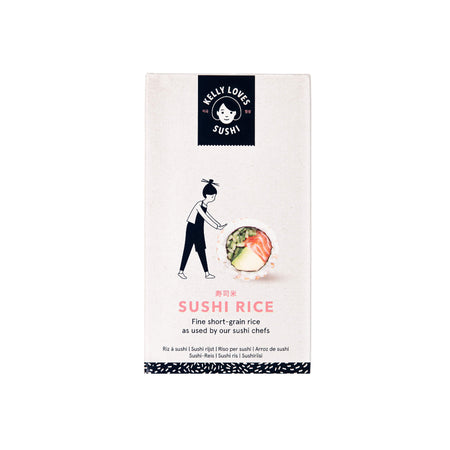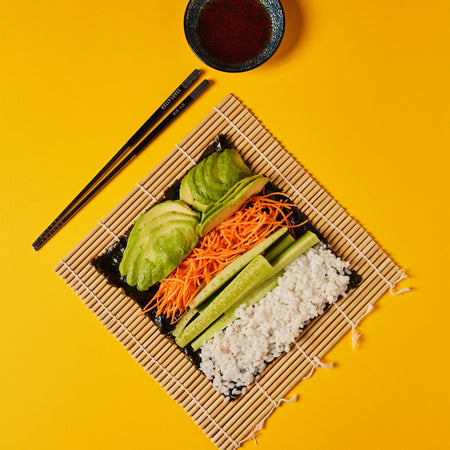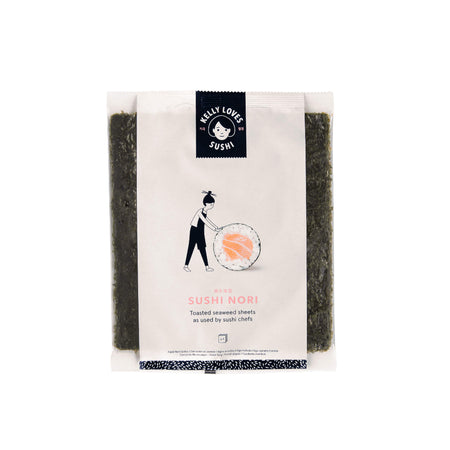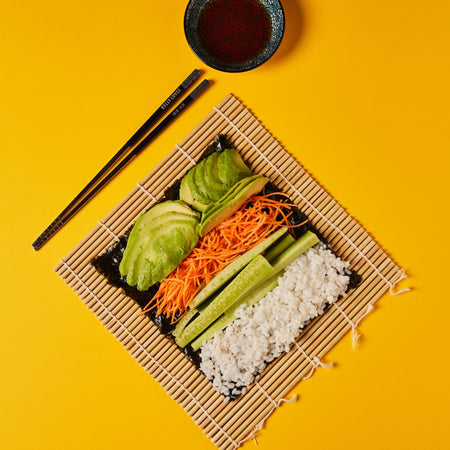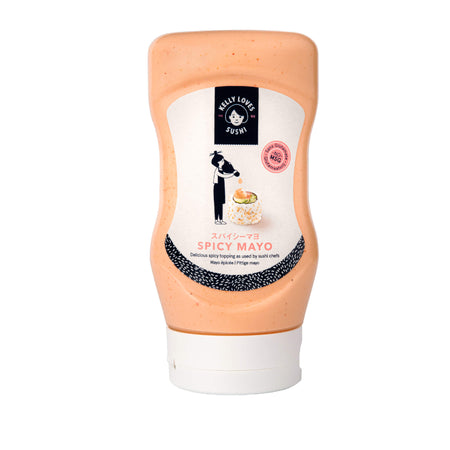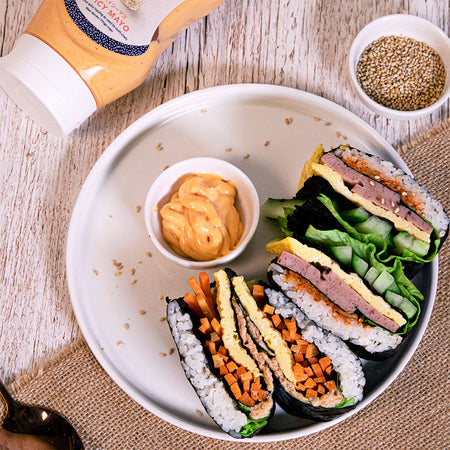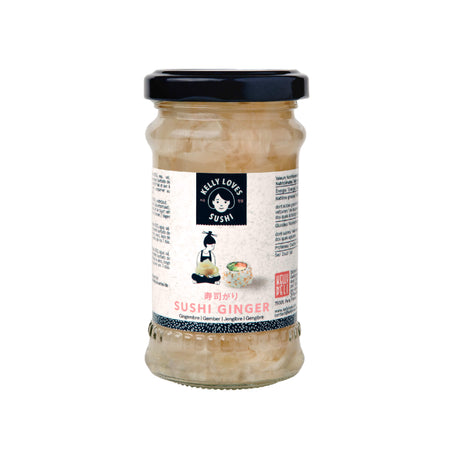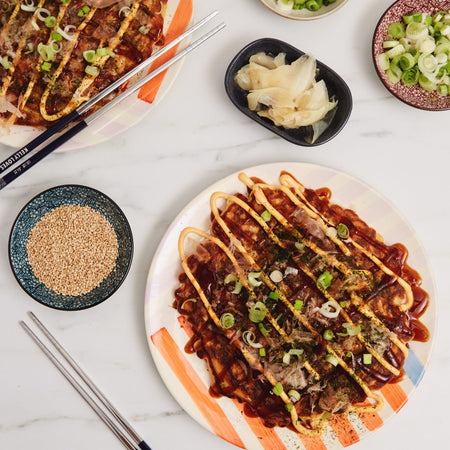9 types of fish eggs used on sushi

Whether it’s a classic tobiko sushi rolled in the fish eggs or a fancy caviar roll, there are plenty of different fish eggs used in sushi ingredients. Feeling a bit lost? It can be confusing! This is why we’re here to share the nine most common types of fish eggs used on sushi.
What fish eggs are used in sushi?
Do you know your tobiko from your masago? Or you ikura from your uni? Well, you definitely will after reading about the nine most popular fish eggs in the world of sushi…
Tobiko
Tokibo is a type of roe from the flying fish species. Ranging from 0.5 to 0.8 millimetres in size, these beautiful red-orange eggs have a salty taste with a subtle hint of smoke. Tobiko is especially crunchy and is often used to add some texture to sushi, making for a very satisfying bite! They’re sometimes a garnish on top of sushi rolls or on the outside of tobiko rolls. Tobiko is the most common type of fish egg used in sushi.
Masago
The untrained eye might mistake masago for tobiko but there are several key differences. Masago is fish eggs from capelin, often found in the Pacific and Arctic oceans. The eggs are smaller than tobiko eggs and paler in colour, more yellow than orange. Often, masago eggs are dyed brighter colours to make them more visually appealing. Masago doesn’t have the same crunchy texture as tobiko and is also milder in flavour, with slightly bitter undertones. Sometimes, masago is used in place of tobiko as it’s cheaper.
Ikura
Ikura is salmon roe. These soft eggs are larger than tobiko and masago. In fact, they’re beautiful, bubbly orange spheres. Ikura is commonly used to garnish sushi rolls or wrapped in crisp nori seaweed on top of sushi rice. It’s not used to add a crunchy texture as salmon roe is much softer, with a gooey, indulgent texture. The main reason for ikura on sushi is for the delicious salty and sweet flavours, plus the large orange balls also look beautiful on top of a perfectly rolled piece of sushi.
Caviar
For those who have a bigger budget, you can indulge in some caviar sushi. There are many different types of caviar, including paddlefish, sturgeon, bowfin and black lumpfish. They each differ slightly in size, taste, texture and, of course, cost, with sturgeon being the most expensive. Caviar is black fish eggs with a beautiful salty flavour that complements many sushi rolls. You may find caviar on top of sushi rice wrapped in nori seaweed. This is one of the more indulgent ways to enjoy sushi!
Tarako
Tarako is pollock or cod roe, and it comes encased in a plain, salted sack of membrane which is entirely edible. The tarako within the membrane is incredibly tender and salty. Typically eaten raw, tarako can be mixed into sushi fillings and it’s less likely to be used as a garnish than other fish eggs. The tender, salty taste adds a wonderful flavour to your sushi and is an extremely versatile ingredient.
Mentaiko
Mentaiko is a type of tarako that’s been marinated in salt and chilli peppers. It has a stronger, spicier taste and aroma. Like tarako, it can be eaten raw or cooked. A common use for mentaiko is as a rice ball, where a piece of cooked mentaiko is wrapped in sushi rice and then in nori seaweed. This tasty sushi snack is packed with salty, spicy flavours, making it a perfect bite for on-the-go!
Sujiko
Sujiko is actually just salmon roe (ikura) that’s still within its egg sack. This means that the fish eggs remain within the membrane when they’re consumed, making it one large bite of salty goodness. It tastes exactly like ikura, with a similar texture. But as it’s a large sack eaten in one go, it can pack a saltier, more flavoursome punch than individual ikura eggs. Often, sujiko is placed on top of sushi rice, making for a deliciously salty bite that’s balanced perfectly with the sticky rice.
Kazunoko
Kazunoko is herring roe that’s marinated in dashi soy sauce seasoning, which results in an umami, salty and soy sauce-induced flavour sensation! The herring eggs are tiny and crunchy, with a lovely golden colour. Kazunoko is often used as a garnish on top of sushi rolls or placed on top of sushi rice and wrapped in nori seaweed. Kazunoko is a traditional Japanese New Year dish, as it’s thought to bring good fortune and prosperity for the year ahead. And it tastes so good that we’re not surprised!
Uni
Uni is sea urchin roe, ranging from a rich golden colour to light yellow. It’s very much a premium sushi ingredient, with it being difficult to harvest and very expensive. With a very umami flavour and sweet undertones, it produces an indulgent creamy liquid that many people enjoy. In high-end Japanese restaurants, you’ll often find some uni sushi. Usually, the urchin roe is placed on top of just rice and seaweed, allowing you to fully enjoy the wonderful flavour.
You’re now an expert when it comes to fish eggs on sushi, meaning you might just have to try them all. Thankfully, our sushi making kits come with everything you need to make tasty sushi, meaning you’re well-equipped to sample all the fish egg sushi you could dream of!
